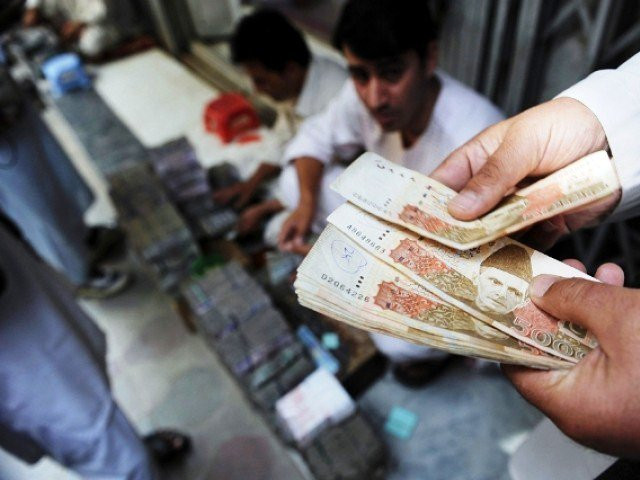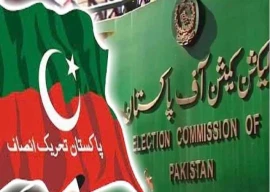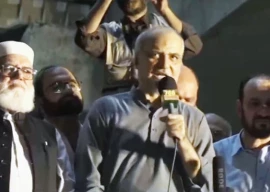
The federal budget deficit in the first half of current fiscal year shot up to Rs1.8 trillion, up 29% compared to the same period of previous year, despite a slowdown in development spending and double-digit growth in revenues.
The budget deficit – the gap between federal income and expenditures – was provisionally recorded at Rs1.8 trillion, or 3.3% of gross domestic product (GDP), for July-December of the ongoing fiscal year, sources told The Express Tribune.
They said that the number might change slightly due to the reconciliation of development spending figures.During the first half of previous fiscal year, the federal deficit had been recorded at around Rs1.4 trillion, which was equal to 3.1% of the size of national economy.
The annual federal budget deficit target is Rs4 trillion for the current fiscal year. Usually, heavy spending is made in the last quarter of every fiscal year.
A major reason behind the surge in deficit was the uptick in current expenditures, as the government spent a lower amount under the Public Sector Development Programme to meet a condition of the International Monetary Fund (IMF) loan programme.
The provisional fiscal operation figures indicated that the government’s strategy to contain the growing public debt by concentrating on increasing revenues may not help in a significant way because most of the Federal Board of Revenue (FBR) taxes were being transferred to the provinces.
Current expenditures were equal to 92% of the total federal government expenditures and 40% of them were spent only on paying interest on loans. Federal development spending stood at only Rs274 billion in the first half of current fiscal year, which was higher than the comparative period of previous year, but constituted only 30% of the annual budget of Rs900 billion.
Finance Minister Shaukat Tarin said in November that the PSDP would be slashed by Rs200 billion to Rs700 billion to reduce the spending bill aimed at rationalising the expenditures.
Development spending was higher by 18% (Rs42 billion) compared to the same period of previous fiscal year, which was not in line with the annual allocation.
After remaining active for a brief period, the IMF’s $6 billion loan programme derailed once again in June last year. The IMF has announced January 28 as the date for its board meeting to review Pakistan’s request to revive the programme and approve $1 billion in loan tranche.
However, one prior action, approval of the State Bank of Pakistan Amendment Bill 2021, remains partially implemented, as the Senate has not yet approved the bill.
The gap between federal income and expenditure grew despite a healthy momentum in the FBR’s tax collection. The tax collection increased nearly one-third to Rs2.92 trillion in the first half of current fiscal year on the back of higher collections at the import stage.
However, the gains made by the FBR were offset by nearly 17% dip in non-tax revenues.
Non-tax revenue collection amounted to Rs720 billion in the first half, down Rs142 billion compared to the same period of previous year. The non-tax revenue collection was equal to only 35% of the annual target of Rs2.1 trillion.
Gross federal revenue receipts of the government increased to Rs3.68 trillion, up 18%. After paying Rs1.7 trillion to the provinces as their share in the National Finance Commission award, the net federal government’s revenues were only Rs1.95 trillion.
Total expenditures incurred by the federal government stood at Rs3.75 trillion, almost double the net government revenues, thanks to the uncontrolled current expenditures that were eating into the tax revenues.
Current expenditures amounted to Rs3.5 trillion, up 18% or Rs520 billion, during the first half of current fiscal year. Interest payments stood at Rs1.4 trillion, slightly less than the previous year, but consumed 72% of the government’s net revenues.
Some analysts argue that the central bank’s interest rate should not be more than 6-7% to control the growing budget deficit. They say a one-percentage-point increase in interest rate jacks up the debt servicing cost by around Rs150 billion.
The government has enforced a Rs360 billion mini-budget by imposing 17% sales tax on over 140 goods. But the additional revenues that it will raise may be lost due to the proportionate increase in the share of provinces and higher debt servicing after the central bank increased the interest rate close to double digits.
During the first half of current fiscal year, the defence spending stood at Rs514 billion, up over 5%, consuming another 26% of the government’s net revenues.
The federal primary budget deficit during the first half of current fiscal year was Rs402 billion against the surplus of Rs82 billion during the same period of previous fiscal year.
After incorporating the impact of provincial cash surplus of Rs480 billion in H1, the overall budget deficit was provisionally recorded at Rs1.32 trillion, or 2.5% of GDP.
Published in The Express Tribune, January 20th, 2022.
Like Business on Facebook, follow @TribuneBiz on Twitter to stay informed and join in the conversation.






1719053250-0/BeFunky-collage-(5)1719053250-0-270x192.webp)












COMMENTS
Comments are moderated and generally will be posted if they are on-topic and not abusive.
For more information, please see our Comments FAQ